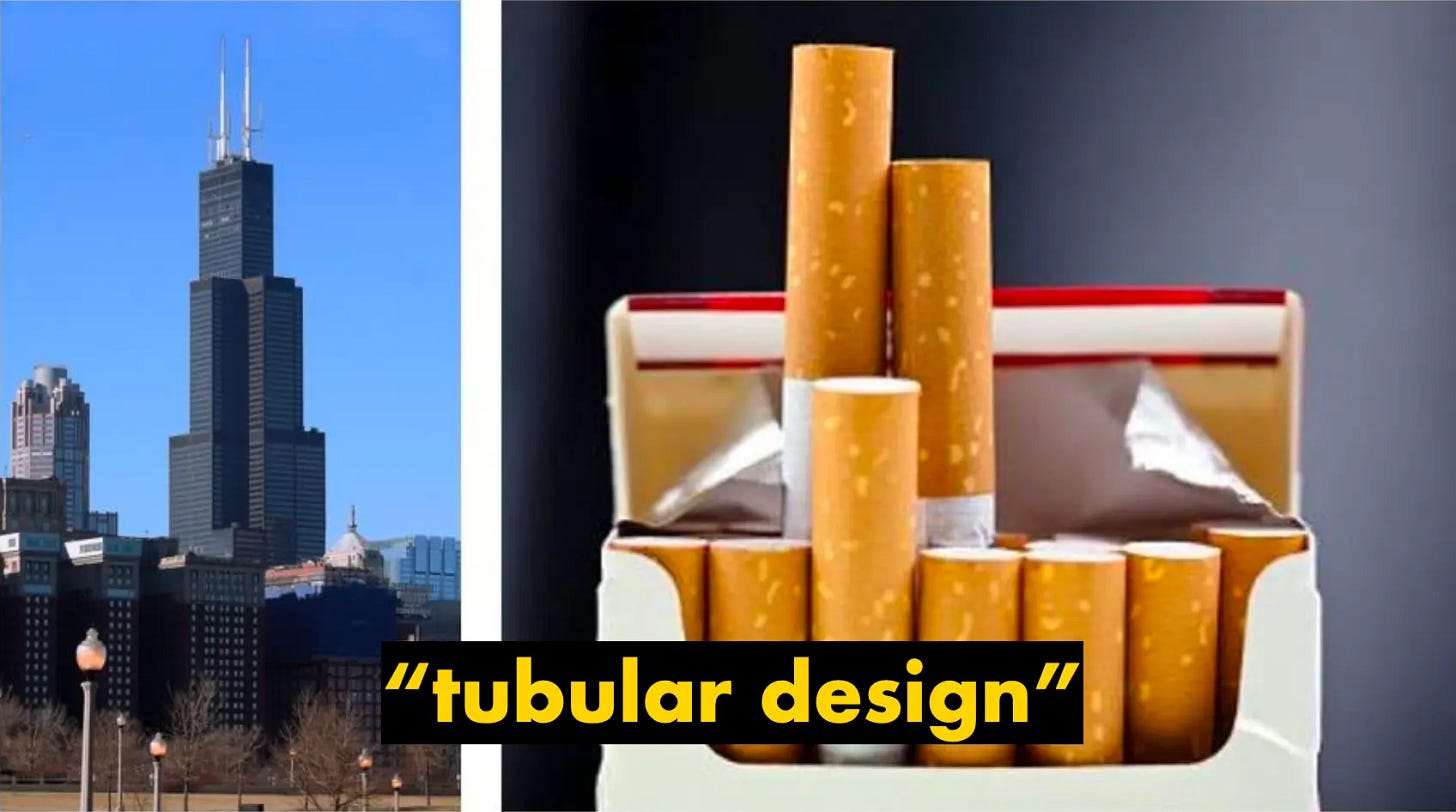How to "Smoke Out" Innovative Solutions To Problems
A new essay by Shane Snow
Some people “aim high,” and others aim to build the tallest building in the world.
Bruce Graham, the world-famous architect, is one of those people whose ambition makes me self-conscious and jealous at the same time. As the New York Times put it in his obituary in 2010, Graham’s architecture designs “single-handedly put Chicago on the map.”
But at one point his greatest ambition, to build the world’s tallest building, was foiled by physics. Ha ha ha. You’re not smarter than me, Bruce.
(He was tho.)
It wasn’t that Graham wasn’t a world-class architect. It wasn’t that he didn’t have the math or the materials to build the world’s tallest building. The thing was, at the time (1970s), the steel and concrete available to build skyscrapers simply couldn’t support the weight of a tower more than 1,368 feet—the height of the World Trade Center in New York City. No matter how you put the pieces together, they weren’t strong enough.
But Graham wanted to beat the WTC’s world record, physics be damned.
He worked on this problem for a long time. But the usual tools of his architectural trade (math and engineering) yielded no breakthrough.
Then one day Graham was smoking a cigarette when an idea struck him.
You see, a cigarette can only stand up on its own if it’s short enough. The longer a cigarette is, the more likely it is to fall.
But anyone who smokes knows that you can pull a cigarette partway out of the pack, and the sideways force of the other cigarettes around it can allow it to hold itself upright much taller than its actual height.
And voila! Bruce Graham made an architectural breakthrough called “tubular design.” The Sears Tower (now named the Willis Tower) is built of nine tubular columns, which hold up the weight of the center tubes and allowed the building to beat physics and become the world’s tallest building.
The moral of the story? Next time you’re stuck on a problem, start smoking.
Just kidding. Spare your lungs. Instead, remember the story. The moral of which is this:
When smart people have maxed out the good ideas inside your field, the easiest (and often only) way to make a breakthrough is to import heuristics from another field.
The adjacent possible* is where the innovation magic happens.
The key word is adjacent.
—
Make a great day,
Shane
Shane Snow is author of three books on human behavior and business, a Tony-winning theatre and film producer, and an eclectic (some say eccentric) explorer and keynote speaker. If you liked this post, please subscribe and share!
*The Adjacent Possible is also the name of one of my favorite Substacks, by author Steven Johnson






